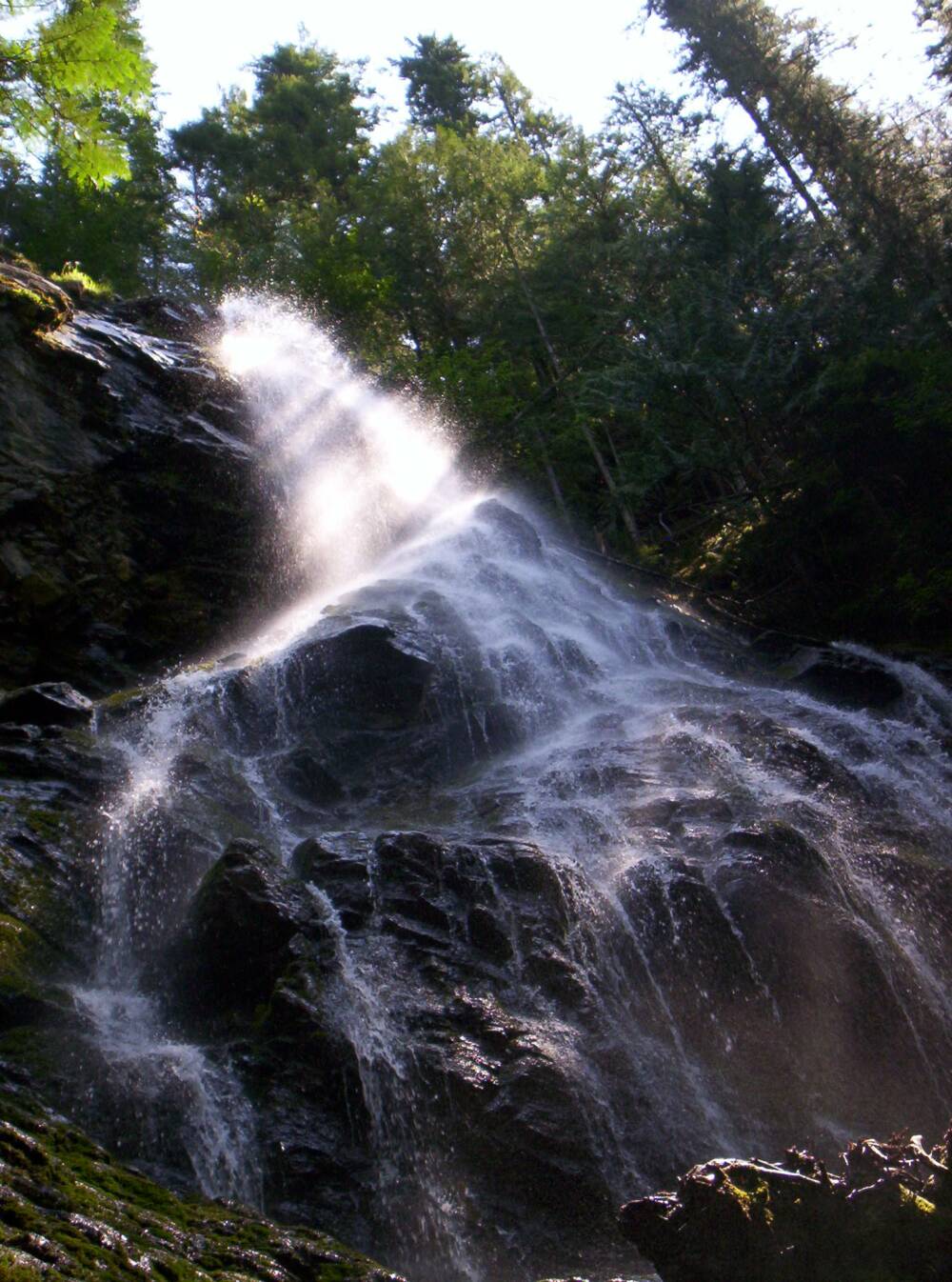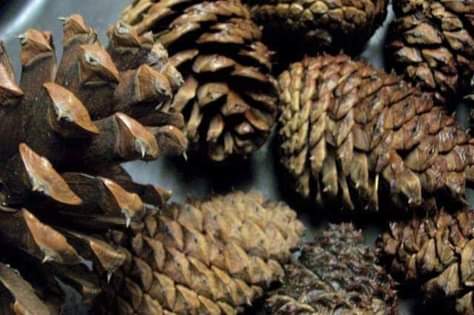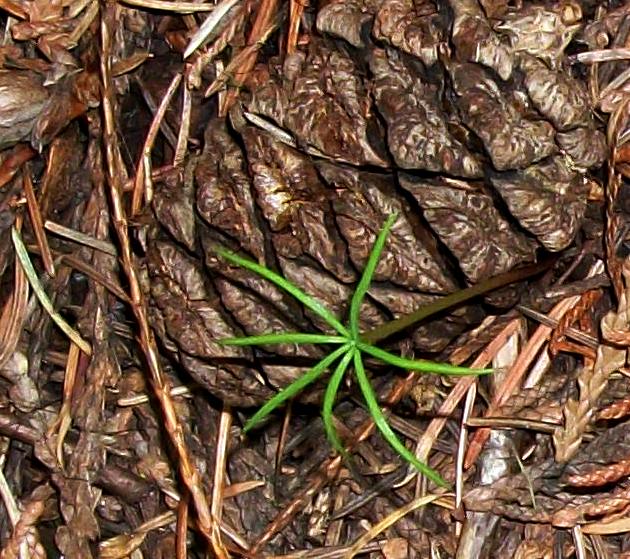Rewild
Nature
One Small Space
at a Time
Mother Tree Hub
feature
As you improve your skills at picking up feelings from plants and trees you will discover that plant energies within ecosystems gather into energy guilds. Often these guilds are strongest around Mother Trees. Like all plants, trees provide energy emissions, which also carry communication between themselves and others.
We really have a lot to learn about how everything works – and how everything is connected. Join us for a presentation about the importance of Mother Trees.
Toolroom 3 - How to Create Habitat for Pollinators and Bats
COMMON POLLINATORS OF BRITISH COLUMBIA:
A Visual Identification Guide
Pollinators play a critical role in supporting both terrestrial ecosystems and agricultural landscapes. Female bees are the most efficient pollinators, as they spend their lifetimes actively collecting both pollen and nectar to feed to their kin, visiting hundreds to thousands of flowers in the process. Other types of pollinators, such as male bees, flies, butterflies and most pollinating wasps, visit flowers to feed on nectar, a vital energy source. During this process, pollen passively brushes onto their bodies and is transported between flowers for pollination.
This visual guide was created to help educate the public on how to identify common pollinators in British Columbia. It is estimated that there are around 500 species of bees in British Columbia. To tell different species apart, you often need to compare very minute characteristics, such as the shapes of veins on their wings, which can be challenging without a microscope and an expert eye. This guide breaks down pollinators into 7 simplified and easily recognizable categories: Honey Bees, Bumble Bees, Hairy Belly Bees, Mining Bees, Wasps, Hover Flies and Butterflies.
https://borderfreebees.com/wp-content/uploads/2017/11/Common-Pollinators-of-British-Columbia-2nd-Edition.pdf
Native Pollinator Initiative
Ninety per cent of all flowering plants can’t reproduce without the help of pollinators. And those plants, in turn, support thousands of other species. That makes insect pollinators such as butterflies, flies, moths, beetles and bees a cornerstone of natural ecosystems (not to mention crop production).
Several pollinating butterfly and bee species have recently been categorized as at risk in Canada. Wildlife Preservation Canada’s Native Pollinator Initiative — our first nationwide multi-species recovery effort — aims to save these important insects from extinction.
However, doing that means pioneering new approaches: conservation management for insects is a relatively new field in North America.
Since the launch of our program in 2013, we’ve collaborated with numerous partners in Canada, the U.S. and overseas. We’ve established conservation breeding colonies, co-created the www.bumblebeewatch.org website, hosted educational workshops, spearheaded scientific research and supported efforts to improve and/or restore habitat.
Selecting Bee Forage Plants
When selecting forage plants for bees, it is important to consider key factors found on this site which also contains a list of plants which are recommended for bee forage. This list is not all inclusive; there are many other nectar and pollen bearing plants that may also be suitable. The current listing includes plants that were selected for various traits including:
Attractiveness to wild pollinators
Occurrence and duration of flowering
Non-invasive growth habit
Ease of growth and suitability for landscaping
Availability
These webinars cover the why and how of supporting pollinators through habitat creation and maintenance, outreach, and citizen science. Discover why bees and other pollinators are so important, common misconceptions that are hindering conservation, how to create and maintain habitat (with specific information for Vancouver Island and the Gulf Islands), how to maximize benefits through outreach and education, and how to observe and monitor pollinators. Each webinar features local experts. For land managers, farmers, students, and gardeners.
Close to a third of our native bees nest in wood, including hollow- or pithy-stemmed plants. For example, small carpenter bees (Ceratina spp.), leaf-cutter bees (Megachile spp.), masked bees (Hylaeus spp.), and mason bees (Hoplitis spp., Osmia spp.) are all types of twig or stem-nesters. Milk-carton bee nests are fun to make and use materials that are easy to find.
www.media.wix.com/ugd/ced4e8_27cc046e895e43beaa5dd28c87c9873f.pdf
Native Plants Bring Valuable Benefits to Farms
Natural Habitat Increases Pollinators, Pest Management, and Soil Fertility
Kristen & James Miskelly, two young biologists dedicated to native plants and natural habitat restoration, are working on a big problem: the rapid decline of vital plant pollinators. At Haliburton Farm in Victoria, BC, where the Miskellys operate Saanich Native Plants nursery, they demonstrate how habitat and wild plants bring productivity and economic benefits to farms.
THIS GUIDE HAS BEEN DEVELOPED TO PROVIDE THOSE RESPONSIBLE FOR MANAGING PUBLIC, PRIVATE, OR CORPORATE LANDS IN VICTORIA, BC CANADA WITH THE MOST CURRENT SCIENCE, TOOLS, AND RESOURCES TO SUPPORT POLLINATORS.
In landscapes fragmented by urbanization and agriculture, small tracts of land – from a small flower bed to a large clearing – are increasingly important for species conservation. Commercial or municipal buildings and lands with green space provide a perfect opportunity to create pollinator habitat and beautify your community, while demonstrating your support for pollinators and the environment. Whether you are interested in planting a carefully designed formal garden, restoring a natural meadow, or creating something that falls somewhere in between, this guide will help you select a site and manage your project step by step. Small patches make a significant contribution to conservation by adding to regional habitat and enhancing connectivity. By enhancing pollinators, you will be supporting ecosystems and the pollination needs of urban gardens and neighbouring farms.
www.bcbeehealth.ca/wp-content/uploads/2020/09/BEE001General-Technical-Guide-for-Creating-Pollinator-Habitat-Victoria-BCfinal.pdf
How to Create Bat Habitat
Generally, bats prefer tall, old, dead, large diameter trees with peeling bark, cracks and crevices. Maintaining continuous lines of forest or high shrubbery along riparian corridors as well as plant species diversity will provide good cover and a potential diverse associated invertebrate community.
Join Dr. Cori Lausen, bat biologist and co-author of the new Royal BC Museum Handbook Bats of British Columbia, for this special presentation! Learn how bats communicate and sense the world through echolocation and about some of the more than 15 bat species that live in British Columbia.
Cori Lausen of the Wildlife Conservation Society Canada published that anecdotal records are surfacing suggesting that bats can overheat in bat boxes, causing heat stress and in some cases, mortality. Is this an effect of climate change? Is this a problem with where we’ve been telling the public to erect bat boxes? Is this a problem with style or stain colour? Is this an issue with a quickly changing landscape for a long lived mammal? Or is it a perfect storm of several of these factors? In this webinar, I will present critical background information that sets the stage for understanding this problem and what might help to rectify it. I also explore the advantages, disadvantages of bat boxes, and fundamental issues that we need to address when considering artificial bat habitat. A basic understanding of thermal energetics in relation to a bat’s energy-budget and changing reproductive demands over the season is needed to make informed decisions about bat roosting habitat. In addition to building an appropriate foundation for this decision-making process, I provide some food for thought about how we approach mitigating evictions of building-roosting bats.
Create and Enhance Habitat of Bats
Bats need food (insects), water, and shelter
Bats may move great distances across the landscape from their summer day-roosts to their nightly foraging areas. Slow flying Townsend’s Big-eared bats were found in the lower mainland of Vancouver to move up to 4 km from a barn in a Regional District park building to their foraging habitat. High, fast-flying species such as silver-haired bats and hoary bats may cover 20 km or more (one-way) away from their day roost on a given night, with most species returning by morning back to the same roost or somewhere quite nearby. Linking green spaces across the landscape between potential roost habitat and potential foraging habitat may be important for bats and other wildlife species.
Bats need three things: food, clean water and a safe roosting spot. By offering any of these things, you are creating bat habitat.
Bat food in Canada consists of insects. A list of bat-friendly garden species in the Kootenays has been compiled by gardening volunteers.
Bats use aquatic features such as wetlands, ponds, channels, and rivers for drinking and foraging. Maintaining water quality for consumption and aquatic invertebrate productivity is key in maintaining high quality foraging habitat for bats. Even small ponds created by humans as a part of landscaping plans can provide an important source of drinking water, especially during summer in the drier parts of the province.
Deciduous trees are important to bats not only as potential roost habitat, but also because of their role in production of invertebrate prey for bats. Generally, bats prefer tall, old, dead, large diameter trees with peeling bark, cracks and crevices. Maintaining continuous lines of forest or high shrubbery along riparian corridors as well as plant species diversity will provide good cover and a potential diverse associated invertebrate community.
If your property has rock faces or rock outcrops, or tall rock walls, these features can provide excellent bat habitat. These rock features may also provide roost places for local bat populations – especially if the rock is fractured and full of small crevices.
There are numerous styles of bat boxes on the market and not all of them are designed for BC. Some factors influencing the success of these designs are related to factors like size, vents, landing strip, etc. Other factors to consider when selecting a style are cost, space available on your property, size of the bat colony (if bats are already present), and location options. For detailed information on bat boxes, download our plans.
Best Stewardship Practices
Bat boxes can be valuable for bat conservation, but reasons to install boxes should be carefully considered, and attention to construction, installation, monitoring, and maintenance are essential.
www.bcbats.ca/attachments/BMPS-for-Bat-Boxes-in-BC-2019.pdf
Due to cumulative human impacts, maternity roosts for bats are increasingly limiting on the landscape. This has an impact on reproductive females who need specific microclimate requirements to raise a pup. This project focuses on bat roost enhancement in the Golden, Columbia Wetlands, and North Kootenay Lake areas of British Columbia in which bark roosts are created or enhanced in areas critical to tree-roosting dependent species such the currently endangered Northern Myotis.
Back to the Basics:
Re-evaluating Bat Boxes based on Bat Needs with Cori Lausen
Webinar description: Bat houses (or more aptly described as bat boxes) are popular across the continent. But are they beneficial or harmful for bats over the long haul? There is growing concern that these structures can act as ecological sinks in some cases. For example, anecdotal and published reports of bats overheating in bat boxes raises a red flag concerning these anthropogenic roosts in a changing climate. Cori will revisit the roles that bat boxes can play in habitat mitigation and present critical background information that sets the stage for understanding problems associated with bat boxes and what might be done. She will also explore the advantages and disadvantages of bat boxes, and fundamental issues we need to address when considering artificial bat habitat.
The Goldilocks Approach:
Use of bat boxes in a changing landscape and climate
CONTACT US
If you believe that you might benefit from the Mother Tree Hub and you are willing to expand your relationship with nature please contact us and we will set up a live conference call with you.
Contact our office by email at the Sanctuary Forest Network: services(at)sanctuaryforestnetwork.com
Or you can call the Wildcraft Forest on our direct line at:
250.547.2001
THE MOTHER TREE HUB - TOOLROOM 3
The Mother Tree Hub
An information portal produced by the Wildcraft Forest Foundation with support from the Regional District of the North Okanagan Conservation Fund; the David Suzuki Foundation and other community supporters.
The Wildcraft Forest Foundation offers skills, insights and
inspiration for creating good stewardship and positive change.
Located at the Wildcraft Forest
1981 Highway 6 Lumby, British Columbia
Discovery Centre – 250.547.2001 Email: services@sanctuaryforestnetwork.com
Main Website: www.wildcraftforest.com
Extension Services: www.wildcraftforestschool.com
Resource Centre: www.mothertreehub.com
This website and all material is copyrighted by the Wildcraft Forest Foundation
www.mothertreehub.com


